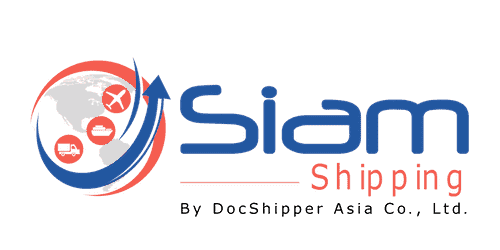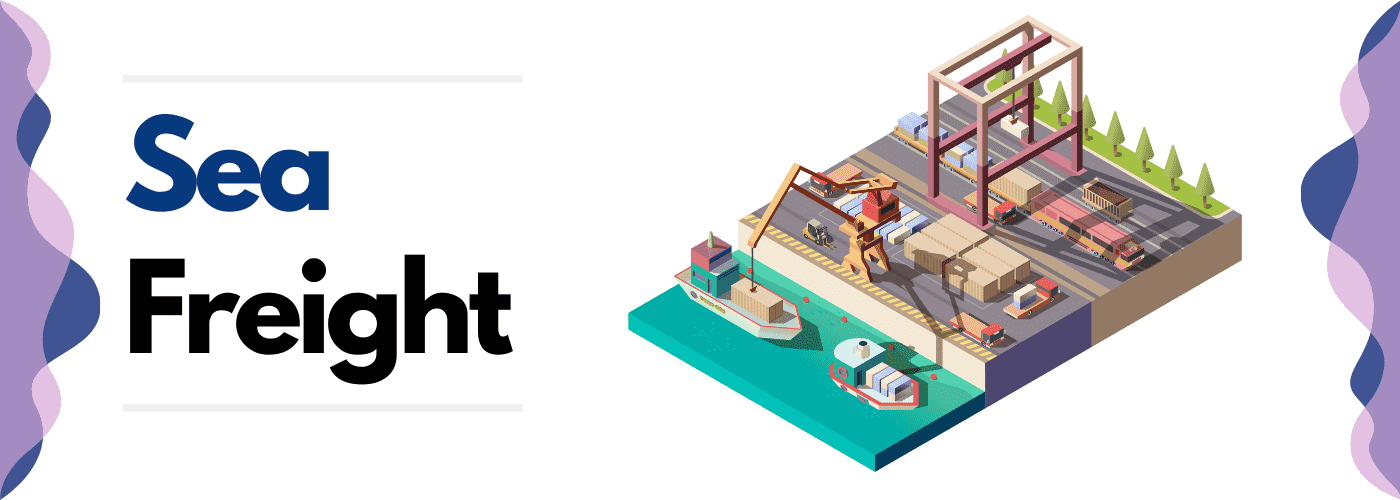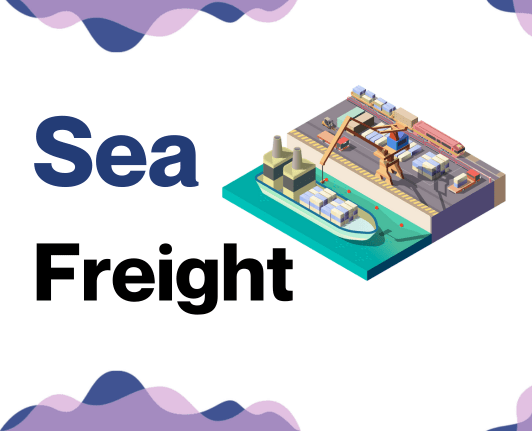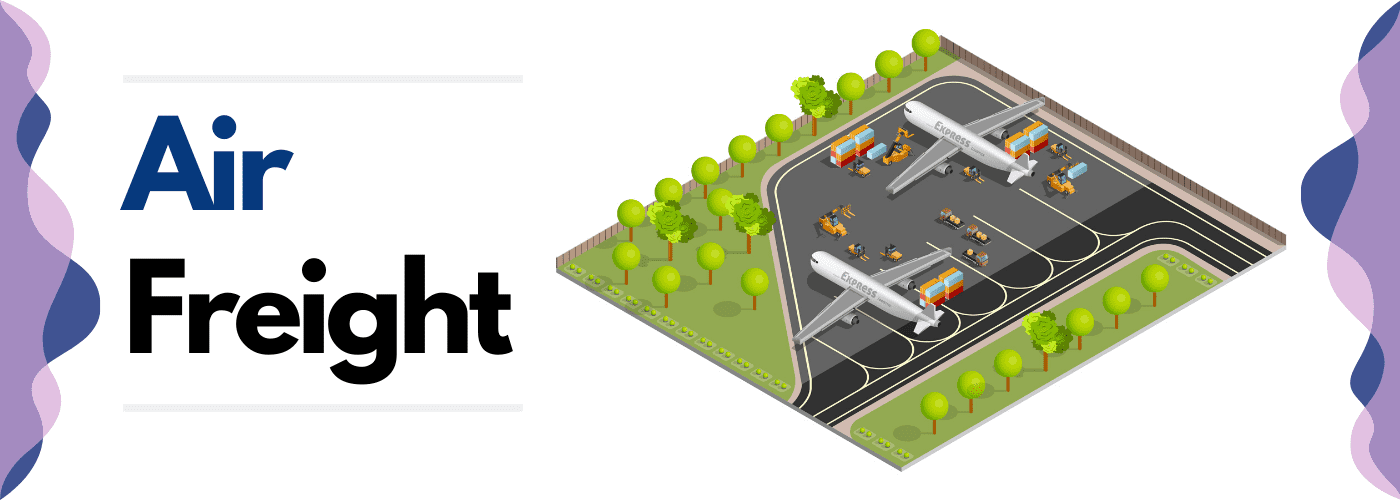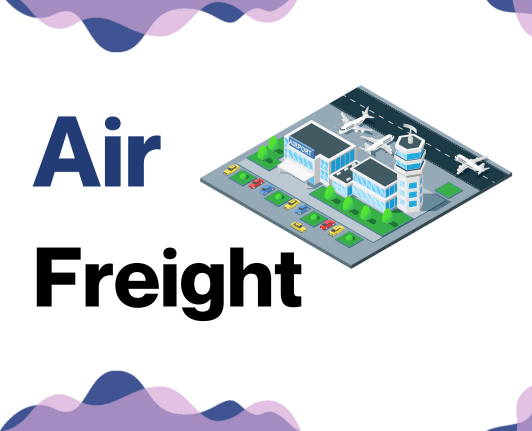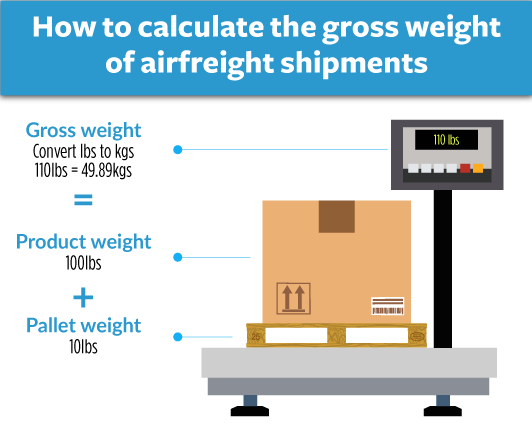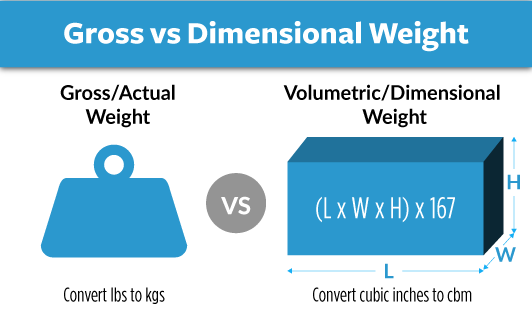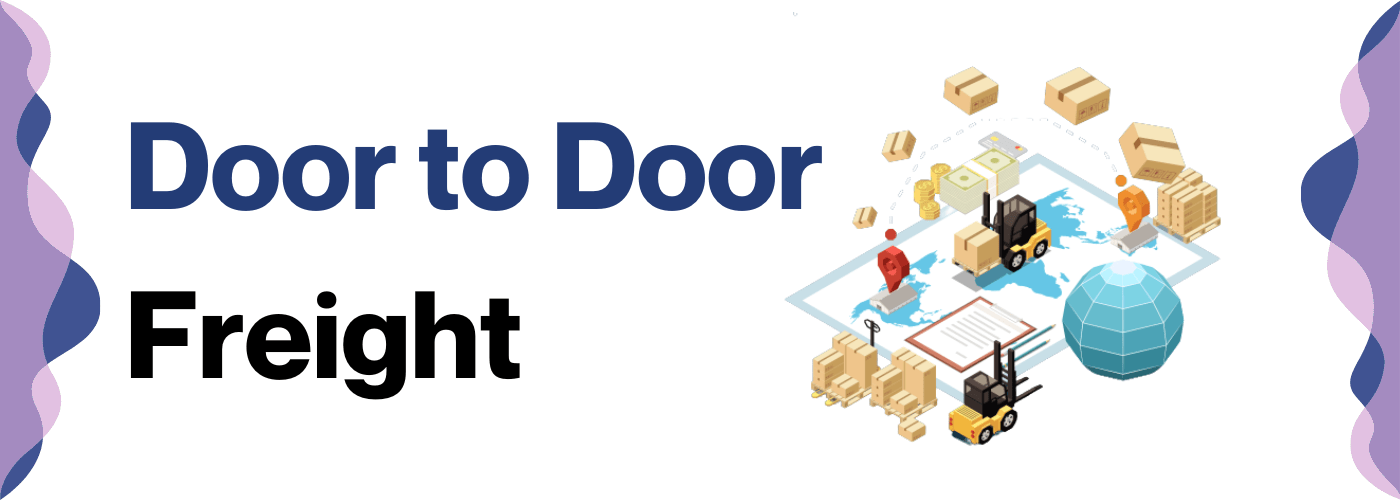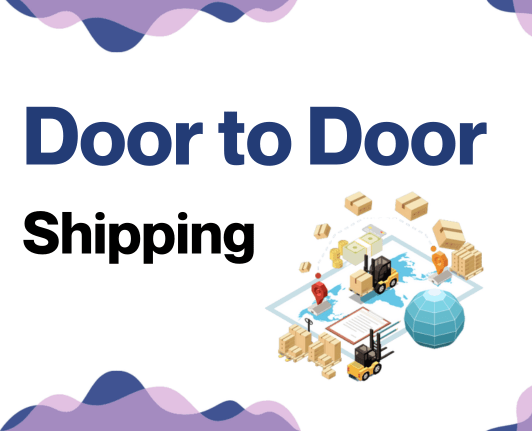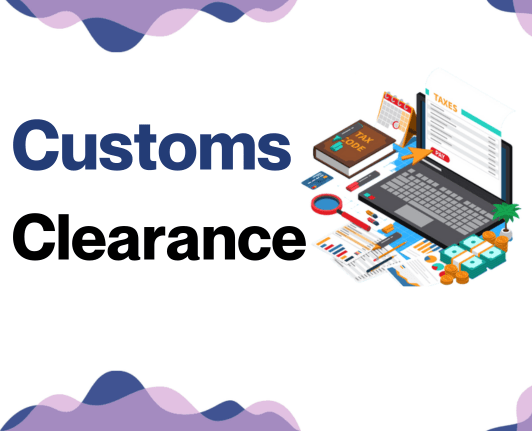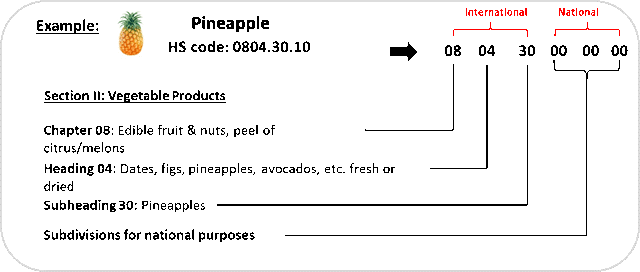Why did the Thai freight shipment go to Greece? Because it couldn’t resist an Odyssey! Jokes aside, the journey of shipping goods between Thailand and Greece can seem like an epic of its own. Your main concerns likely revolve around understanding rates, navigating transit times, and adhering to customs regulations - but fear not, this guide is here to demystify the process.
Expect in-depth knowledge about different freight options, be it by air, sea, road or rail. We delve into the intricacies of customs clearance, duties, and taxes, providing pointed advice tailored for businesses. The guide will also offer practical tips to optimise your shipping operations. If the process still feels overwhelming, let DocShipper handle it for you! As an experienced international freight forwarder, we smooth any rough seas, turning potential shipping challenges into triumphant success for your business.
Which are the different modes of transportation between Thailand and Greece?
Transporting your goods from Thailand to Greece isn’t as simple as just plotting a straight line on the map. As the crows fly, it may seem straightforward, but in reality, batchfuls of hurdles like immense distance, vast seas, and numerous international borders make it a tricky task. Ocean and air transport become the frontrunners when it comes to practicality. Picture choosing between a swift but high-jumping kangaroo (air transport) and a steady, long-distance galloping horse (sea freight). Aligning your unique shipping puzzles with the right method is like picking the perfect puzzle piece - immensely satisfying and thoroughly crucial.
How can Siam Shipping help?
Struggling to figure out how to ship your goods between Thailand and Greece? With DocShipper's aid, the process becomes a breeze! Benefit from our robust network, knowledge of customs, and years of logistics experience. We'll navigate the complexities so you don't have to! Have a question or need a free estimate? Reach out to our consultants today. We're just a call away!
Siam Shipping Tip: Consider ocean freight if:
- You are shipping large volumes or bulky items, as sea freight offers the most space at a cost-effective rate.
- You're not racing against the clock. Ocean freight takes its sweet time, especially when stacked up against other transport methods.
- Your supply chain is linked up with big-name ports. Think of it as the VIP lane on the maritime superhighway.
Sea freight between Thailand and Greece
Trade between Thailand and Greece is a vibrant, high-volume operation, with vital links forged by ocean freight. The ports - notably Bangkok's Laem Chabang and Piraeus in Athens - serve as the mainstay for industrial exports, connecting key trade sectors. As the slow-coach of freight,sea shipping might seem a sleeper, yet its unparalleled cost-effectiveness for bulking goods places it at the heart of these nations' exchange.
But, smooth sailing isn't guaranteed in this shipping route. Many businesses stumble over the rocks of customs hang-ups, tracking intricacies, and the labyrinth of route selection. Imagine being a stage director: not just taking charge of the show, but also the rehearsals, cast, and lobby. It's a juggling act. Complex, but not insurmountable. With our simplified guides and best practice solutions, we'll break down this seemingly multifaceted task. Stay tuned to make your organization the maestro of shipping between these Mediterranean and Southeast Asian titans.
Main shipping ports in Thailand
Laem Chabang Port
Location and Volume: Situated in Chonburi Province, the Laem Chabang Port serves as a critical hub for Thailand's international trade. The seaport, which handles over 7 million TEU annually, is the country's largest and busiest port.
Key Trading Partners and Strategic Importance: The main trading partners include China, Japan, and the USA. The port serves as a significant base for heavy industries, car manufacturing, and oil refineries due to its proximity to the Eastern Economic Corridor (EEC).
Context for Businesses: If your objective is to expand your presence in Southeast Asia, especially in heavy industries or automotive fields, Laem Chabang Port might be your top choice due to its strategic location and robust infrastructure.
Bangkok Port
Location and Volume: Bangkok Port, situated in Khlong Toei District along the Chao Phraya River, handles approximately 1.5 million TEU annually.
Key Trading Partners and Strategic Importance: Major trading partners include ASEAN countries, Japan, and China. The port's significance stems from its close proximity to Thailand's capital, making it an essential node in domestic supply chains.
Context for Businesses: If you are looking to target the domestic Thai market or utilize multimodal transport, the Bangkok Port’s location inside the city and close proximity to Thailand's road and rail networks may play a crucial role in your logistics.
Map Ta Phut Port
Location and Volume: Located in Rayong, the Map Ta Phut Port is a specialized port, dealing largely with industrial goods. The port handles over 1 million TEU per year.
Key Trading Partners and Strategic Importance: Trading partners include Japan, South Korea, and China. With nearby Petrochemical and Industrial Complexes, the port is strategically important for petrochemical and oleochemical industries.
Context for Businesses: If you're in the petrochemical or related industries and looking to either import raw materials or export finished goods, Map Ta Phut Port's specialized facilities may be critical for your logistics.
Sattahip Commercial Port
Location and Volume: Sattahip Commercial Port is located in Chonburi Province. The port mainly handles bulk and loose cargo with a handling capacity of over 15 million tons annually.
Key Trading Partners and Strategic Importance: The primary partners are China, Indonesia, and Australia. The port is commonly used for importing raw materials and exporting agricultural products.
Context for Businesses: If your business involves bulk shipments involving raw materials or agricultural products, Sattahip Commercial Port might effectively cater to your shipping strategy.
Sriracha Harbor Deep Sea Port
Location and Volume: Strategically situated in Chonburi, Sriracha Harbor is a specialized deep-sea port handling mostly oil and gas shipments and handles over 40 million tons annually.
Key Trading Partners and Strategic Importance: The main trading partners include Singapore, UAE, and Saudi Arabia. Extensive oil and gas facilities make Sriracha Harbor strategically important for these sectors.
Context for Businesses: If your business involves oil or gas shipments, utilizing Sriracha Harbor can provide significant benefits, such as easy access to major oil refineries in the area and specialized port facilities.
Songkhla Deep Sea port
Location and Volume: Located in Songkhla Province, the Songkhla Deep Sea Port specializes in handling regional, bulk, and general cargo.
Key Trading Partners and Strategic Importance: Major trading partners include Malaysia, Singapore, and Indonesia. Located on the Gulf of Thailand, the port is strategically important for trading within the ASEAN region.
Context for Businesses: If your business deals with general cargo shipments within the ASEAN region, Songkhla Deep Seaport’s location and facilities might play a crucial role in your logistics strategy.
Main shipping ports in Greece
Port of Piraeus
Location and Volume: Situated in the Athens metropolitan area, the Port of Piraeus serves as a major hub for trade and shipping in the Mediterranean. The port has a shipping volume exceeding 5.65 million TEU, making it the largest port in Greece and one of the busiest in Europe.
Key Trading Partners and Strategic Importance: The port's key trading partners span across Europe, Asia, and Africa with China, Germany, Italy, and Turkey being the notable ones. Given its strategic location, the Port of Piraeus plays an essential role in connecting European markets with global trade routes.
Context for Businesses: If you're aiming to expand your European customer base or integrate European suppliers, the Port of Piraeus is a prime consideration given its ample capacity and the multitude of shipping carriers that serve the port.
Port of Thessaloniki
Location and Volume: Located in Northern Greece, the Port of Thessaloniki is the second largest port in the country and central to the Balkan trade network. It handles approximately 400,000 TEU annually, facilitating trade for the industrialized regions of Greece.
Key Trading Partners and Strategic Importance: Key trading partners include Italy, Bulgaria, and Germany, among others. Strategically, the port is crucial for linking Northern Europe with the Middle East, offering sea-road connections via the PATHE Patra-Athens-Thessaloniki-Evzones corridor.
Context for Businesses: If your trade strategy involves tapping into northern Greece's manufacturing sector or expanding into Balkan markets, the Port of Thessaloniki should be part of your logistics discussion given its strategic location and comprehensive multimodal connections.
Port of Heraklion
Location and Volume: Situated on Crete Island, the Port of Heraklion is a key gateway in connecting mainland Greece with international routes. The port, though smaller in scale, handles both containerised and Roll-on/roll-off RoRo freight.
Key Trading Partners and Strategic Importance: The port strengthens Greece's trade relations mainly with European partners. It's especially strategic for tourism, accommodating hundreds of thousands of passengers each year, but also sees a growing volume of freight.
Context for Businesses: For businesses involved in sectors such as tourism, or companies based on Crete, the Port of Heraklion could be a critical component in your supply chain, due to its niche position and the unique access to markets it provides.
Port of Volos
Location and Volume: The Port of Volos, located midway along the Greek mainland, is an industrial hub handling more than 500,000 TEU annually, specializing in bulk cargo of cement and minerals.
Key Trading Partners and Strategic Importance: The port primarily serves countries in the Mediterranean, the Middle East, and Black Sea region. Being a part of Ten-T Core Network Corridor, it's strategically important to EU's transportation plans.
Context for Businesses: If you're specializing in heavy industries like construction or metal smelting, the Port of Volos, with its extended handling of bulk cargo, can be a valuable asset to your logistics plan.
Port of Igoumenitsa
Location and Volume: Located in the northwestern part of Greece, the Port of Igoumenitsa is heavily oriented towards RoRo traffic, with a strong focus on passenger and freight ferry services.
Key Trading Partners and Strategic Importance: Key partners include Italy and Albania due to ferry routes. The port holds strategic importance for freight vehicles traveling to other parts of Europe through Balkan routes.
Context for Businesses: If the core of your business is in the automotive industry or involves regular freight ferry services across the Adriatic, Igoumenitsa's port could play a key role in your logistics strategy.
Port of Alexandroupoli
Location and Volume: Located in northeastern Greece, the Port of Alexandroupoli caters to the bulk and project cargo movements related to the regional industries.
Key Trading Partners and Strategic Importance: The port is establishing trading links with various nations benefitting from its proximity to the Turkish border. Its location lays the route for the 'fertilizer corridor' from Russia to Greece.
Context for Businesses: If your business operations involve the movement of bulk or project cargo, or if you're eyeing opportunities in the emerging 'fertilizer corridor', Port of Alexandroupoli offers an optimal solution within your shipping strategy.
Should I choose FCL or LCL when shipping between Thailand and Greece?
Shipping goods between Thailand and Greece? The choice between Full Container Load (FCL) and Less than Container Load (LCL), also known as consolidation, can be a strategic decision. It's more than just cargo; it shapes your cost, delivery timeline, and overall shipping success. Picking the right option is like fine-tuning an instrument - it needs careful consideration and understanding. Ready to dive in? This section empowers you to weigh up FCL and LCL, unearthing the complexities of each and ultimately, helping you to chart your optimal course through the intriguing world of sea freight. Let's get started!
LCL: Less than Container Load
Definition: Less than Container Load (LCL) shipping, also known as consolidation, refers to shipments that do not fill a whole container. Various shippers' cargoes are combined into one container.
When to Use: LCL shipment becomes a feasible choice when the cargo volume is small—typically less than 13, 14, or 15 cubic meters (CBM). It offers flexibility and cost-effectiveness for smaller volumes.
Example: Suppose a Thailand-based furniture manufacturer is exporting only a small number of tables to Greece. Instead of booking a whole container, they can choose LCL freight, which can be shared with other businesses' goods.
Cost Implications: Since you only pay for the space you use, it's generally cheaper for smaller volumes. However, remember that there could be additional fees for consolidation and de-consolidation activities. Moreover, as more handling is involved, there's slightly higher risk of damage or delay compared to Full Container Load (FCL) shipping.
FCL: Full Container Load
Definition: FCL (Full Container Load) shipping implies that you're buying all the space inside a shipping container, typically a 20'ft or 40'ft container, from Thailand to Greece.
When to Use: FCL is a wise move when your cargo volume exceeds 13/14/15 cubic meters (CBM), otherwise known as the break-bulk point. High-volume shipments make FCL cost-effective and offer an additional layer of security as the container seals remain intact from source to destination.
Example: For instance, a furniture exporter from Thailand with a shipment of 20 CBM would opt for FCL. Their goods can safely occupy a whole 20'ft container, significantly reducing the risk of damage during transit and providing a sense of security about the cargo's safe arrival in Greece.
Cost Implications: While FCL might appear more pricey at first, especially when getting an FCL shipping quote, it becomes financially feasible with larger volumes. Why? It's simply because the price per unit decreases; so, in essence, the more you ship, the less you pay per unit, making FCL an economical choice for bigger consignments.
Unlock hassle-free shipping
Make your Thailand-to-Greece cargo shipping effortless with DocShipper. Our ocean freight experts will assist you in choosing between consolidation and full container shipments, gauging factors such as your budget, shipment size, and delivery timeline. Why navigate the murky waters of freight forwarding alone? Let DocShipper be your compass. Contact us today for a free, no-obligation cost estimation. Let's sail to success together!
How long does sea freight take between Thailand and Greece?
On average, sea freight shipping between Thailand and Greece takes around 5-6 weeks. It's important to be aware that these transit times are influenced by various factors such as the specific ports used, the weight of your shipment, and the nature of the goods being transported. If you're looking for a more accurate estimate tailored to your specific needs, it's recommended to get a personalized quote from a freight forwarder like DocShipper.
To provide you with a clearer picture, here's a table providing a general idea of transit times between the main ports in Thailand and Greece:
| Thailand Ports | Greece Ports | Average Transit Time (Days) |
| Laem Chabang | Piraeus | 19-22 |
| Laem Chabang | Thessaloniki | 20-25 |
| Bangkok | Piraeus | 19- 22 |
| Bangkok | Thessaloniki | 20-25 |
*Remember, the number of factors affecting the actual shipment time means that these figures should only be used as a guide.
How much does it cost to ship a container between Thailand and Greece?
Grasping the intricacies of shipping costs is crucial. Unlike grabbing groceries where prices are plain to see, understanding ocean freight rates is a different ballgame. Sending a container from Thailand to Greece? Costs could swing broadly, impacted by variables such as your precise points of loading and destination, the type of cargo, the carrier chosen, along with monthly market tides. With every scenario presenting unique challenges, pinpointing a standard shipping cost is like nailing jelly to a wall. Don’t sweat it though! Our adept shipping specialists relish these puzzles, working alongside you to sift through the complexities and secure the best possible rates, tailored specifically to your needs. Remember, we quote on a case-by-case basis ensuring the finest, customized solutions
Special transportation services
Out of Gauge (OOG) Container
Definition: An OOG container is designed to transport out of gauge cargo that doesn't fit in standard shipping containers due to their size or weight.
Suitable for: Oversized cargo, industrial equipment, construction materials.
Examples: Machinery parts, oversized steel beams, boats.
Why it might be the best choice for you: If your business needs to ship oversized items that can't fit in a standard container from Thailand to Greece, a OOG container is the ideal shipping option for you.
Break Bulk
Definition: Break bulk is a method where goods are loaded individually not in containers. This method is used when cargo can't fit within a container.
Suitable for: Large goods, irregularly shaped cargo.
Examples: Timber, wind turbine blades, yachts.
Why it might be the best choice for you: If your goods cannot be containerized due to their large size or irregular shape, then shipping as break bulk may be the right fit for your business needs.
Dry Bulk
Definition: Dry bulk refers to commodities shipped in large quantities, stored in the cargo compartments of ships without packaging.
Suitable for: Grain, coal, cement, minerals, fertilizers.
Examples: Soybeans, rice, sugar, salt.
Why it might be the best choice for you: If your business involves the transport of unpackaged goods in large quantities like grains or minerals, the dry bulk method may be optimal for your shipping from Thailand to Greece.
(Ro-Ro)
Definition: A ro-ro vessel is designed for transporting vehicles. The cargo is rolled on at the point of origin and rolled off at the destination.
Suitable for: Cars, trucks, trailers, buses, and any other vehicles that can be driven or towed onto the vessel.
Examples: New or used automobiles, construction machinery, tractors, motorhomes.
Why it might be the best choice for you: If you're in the business of transporting vehicles from Thailand to Greece, then a ro-ro vessel is the ideal shipping choice, due to its ease of loading and unloading.
Reefer Containers
Definition: Refrigerated containers, or 'reefers', are temperature-controlled containers that maintain a specific climate to ship perishable goods.
Suitable for: Fruits, vegetables, dairy products, pharmaceuticals.
Examples: Seafood, meat, medicine, flowers.
Why it might be the best choice for you: If you are shipping items that require specific temperatures during transport from Thailand to Greece such as food or pharmaceuticals, then a reefer container will be your best option to safeguard your cargo's integrity.
In every step of your cargo's journey, DocShipper ensures personalized and optimized solutions. Don't hesitate to contact us for a free shipping quote! We respond within 24 hours to assist with your shipping needs between Thailand and Greece.
Siam Shipping Tip: Consider Air freight if:
- Time's ticking and you can't wait. Air freight is like the express train of shipping; it's the quickest way to get your stuff from A to B.
- You're not shipping a warehouse. If your cargo is under 2 CBM, air freight is a snug fit for your smaller haul.
- Your supply chain ends somewhere off the beaten path. Airports are everywhere, so you can get your goods to those hard-to-reach spots.
Air freight between Thailand and Greece
When it comes to speed and reliability, nothing beats air freight between Thailand and Greece. Picture this: Your quirky Thai silk scarves or valuable silver jewelry can make their way to the bustling markets of Athens in no time. However, choosing to wing it without proper planning can leave you grounded. Imagine using a scooter when you could easily take a race car - that's what it's like if you don't use the right weight formula when estimating your air freight costs. Slip-ups like these can fast track your budget to sky high realms. Here, we'll help you sidestep these costly blunders, ensuring your high-value shipments don't set your wallet aflutter more than necessary.
Air Cargo vs Express Air Freight: How should I ship?
Unsure of the best route for your Thailand-Greece shipment? Let's demystify it: while air cargo comfortably nests your goods in a commercial airline amidst passengers’ suitcases, express air freight swiftly delivers your parcels on a plane dedicated solely to cargo. Buckle up as we delve into these options to find the perfect fit for your business needs.
Should I choose Air Cargo between Thailand and Greece?
For shipments exceeding 100/150kg (220/330 lbs), air cargo between Thailand and Greece is a feasible choice. You will find airlines such as THAI and Aegean Airlines actively involved in freight services. THAI's cargo operations are comprehensive and aim for cost-effectiveness. Aegean Airlines 'cargo service promises reliability, albeit longer transit times due to fixed schedules. Choosing air cargo, while strictly considering its cost and transit times, could suit your budgetary needs well.
Should I choose Express Air Freight between Thailand and Greece?
Express air freight, a dedicated service using cargo planes without passengers, works brilliantly if you're shipping lighter cargos - typically under 1 CBM or 100/150 kg (220/330 lbs). Companies such as FedEx, UPS, and DHL lead in this arena, catering to global shipments swiftly and reliably. If your business requires quick shipping times and your cargo fits these parameters, express air freight from Thailand to Greece could be a perfect match. You'll benefit from shorter transit times, which is invaluable when time is of the essence.
Main international airports in Thailand
Suvarnabhumi Airport
Cargo Volume: Suvarnabhumi Airport handles over 1.3 million tons of cargo annually, making it one of the busiest cargo airports in Asia.
Key Trading Partners: The airport is a significant gateway for trade with China, Japan, and the United States.
Strategic Importance: Located just 16 kilometers from Bangkok, Suvarnabhumi Airport offers substantial connectivity for businesses targeting Asian markets.
Notable Features: The airport features advanced logistics facilities and cool storage for perishable goods.
For Your Business: The vast volume of cargo movement and extensive connectivity could facilitate easy supply chain management and quicker time-to-market for your products.
Don Mueang International Airport
Cargo Volume: Don Mueang International Airport handles nearly 900,000 tons of cargo every year.
Key Trading Partners: Major traded commodities are from China, Malaysia, and Singapore.
Strategic Importance: Being Bangkok's first international airport, Don Mueang maintains a position of strategic relevance for regional trades.
Notable Features: The airport hosts a Free Trade Zone providing potential duty savings for your business.
For Your Business: The presence of a Free Trade Zone allows for efficient customs clearance and could mean significant cost savings for your operations.
U-Tapao International Airport
Cargo Volume: U-Tapao currently handles under 100,000 tons of cargo annually but has plans for future expansion.
Key Trading Partners: Key trading partners include China, Cambodia, and Laos.
Strategic Importance: U-Tapao is part of Thailand’s Eastern Economic Corridor (EEC) project, which aims to boost growth in the region.
Notable Features: Being part of the EEC, goods transiting through U-Tapao are potentially eligible for customs duty benefits and incentives.
For Your Business: The strategic development plans for U-Tapao represent opportunities for businesses seeking an entry point into Southeast Asia's emerging markets.
Chiang Mai International Airport
Cargo Volume: This airport handles around 160,000 tons of cargo annually.
Key Trading Partners: Its key trade partners include China, Hong Kong, and India.
Strategic Importance: As the primary air gateway to Northern Thailand, Chiang Mai Airport offers businesses access to a vibrant regional market.
Notable Features: The airport boasts direct freight flight services to Guangzhou and Shenzhen in China.
For Your Business: Chiang Mai’s direct freight flights into major Chinese markets could offer your business a cost-effective solution for penetrating these markets.
Phuket International Airport
Cargo Volume: Phuket International handles approximately 150,000 tons of cargo each year.
Key Trading Partners: Key partners include China, Australia, and South Korea.
Strategic Importance: As the second busiest airport in Thailand, Phuket International plays a crucial role in supporting the southern region's trade.
Notable Features: The airport houses a permanent customs office, aiding in streamlined import/export procedures.
For Your Business: The airport’s strategic location and permanent customs office might enable smoother clearance of your shipments, creating a more reliable supply chain.
Main international airports in Greece
Athens International Airport
Cargo Volume: Annually handles over 96,500 tons of air cargo.
Key Trading Partners: Primarily China, Germany, Italy, and France.
Strategic Importance: As Greece’s largest airport, it is the main gateway for international freight to and from the country. It is strategically located close to Athens seaport, providing excellent multimodal shipping opportunities.
Notable Features: Athens International Airport boasts modern cargo facilities with capacity for a broad variety of goods, including perishables and dangerous goods.
For Your Business: This airport is key for access to European markets as well as facilitating close ties with Asia. The comprehensive air and ground handling services ensure the efficient loading and unloading of your goods.
Thessaloniki Airport, Makedonia
Cargo Volume: Handles over 15,000 tons of cargo annually.
Key Trading Partners: Include Germany, Italy, Turkey, Luxembourg, and China.
Strategic Importance: Located in Northern Greece, Thessaloniki Airport provides important connectivity for businesses operating in the Balkan and Southeastern Europe region.
Notable Features: Offers modern cargo facilities and direct connection to Greece's extensive motorway network.
For Your Business: If your shipping strategy involves markets in South East Europe or connecting road freight to and within the Balkan region, this airport provides a hive of opportunities.
Heraklion N. Kazantzakis International Airport
Cargo Volume: Approximately 1,600 tons of air cargo annually.
Key Trading Partners: Italy, Germany and Cyprus are among the top partners.
Strategic Importance: Key airport of the Island of Crete, it provides connectivity to the Southern Aegean region.
Notable Features: Heraklion N. Kazantzakis International Has recently undergone significant upgrades focused on enhancing cargo management facilities to cater to growing freight traffic.
For Your Business: If your business activities include tourism or the luxury product related industries or are based around the Aegean, Heraklion International Airport is placed as an important cog in your air shipping strategy.
Chania International Airport I. Daskalogiannis
Cargo Volume: Handler of over 1,500 tons of air freight annually.
Key Trading Partners: Predominantly Germany, France, Italy, and the UK.
Strategic Importance: Provides a vital link to the Western part of the Greek island of Crete.
Notable Features: Newly built modern infrastructure with top-tier cargo handling facilities that can cater to various types of goods.
For Your Business: For shipping precious cargoes, or dealing with the Cretan resorts industry, leveraging Chania International Airport might yield effective returns on your freight forwarding strategy.
Rhodes International Airport Diagoras
Cargo Volume: Annually manages approximately 1,100 tons of cargo.
Key Trading Partners: Key trading partners include Germany, Russia, and the UK.
Strategic Importance: Vital hub for ensuring connectivity to the Dodecanese islands in Southeastern Aegean Sea.
Notable Features: Key features include upgraded cargo handling facilities and quick processing times.
For Your Business: If your business has a presence in the Dodecanese region or deals with tourism and local product exports (like olive oil, honey etc), Rhodes International Airport provides an efficient air freight solution.
How long does air freight take between Thailand and Greece?
Shipping from Thailand to Greece by air freight typically takes approximately 2 to 5 days. However, it's important to note that this transit time can vary. Several factors come into play including the specific airports being used, the weight of the cargo, and the type of goods being shipped. For accurate and personalized transit times, we strongly recommend consulting with a freight forwarder with expertise in handling such shipments, such as DocShipper.
How much does it cost to ship a parcel between Thailand and Greece with air freight?
Air freight between Thailand and Greece generally costs between €5 to €10 per kilogram - though, an exact price is elusive due to factors such as distance from departure and arrival airports, dimensions, weight, and nature of goods. You're not alone in this; our team is here to guide you. We provide tailored quotes considering all these factors, striving to offer you the best rates. To get started, contact us for a free quote within 24 hours.
What is the difference between volumetric and gross weight?
Gross weight refers to the actual weight of the goods and their packaging, expressed in kilograms (kg). Volumetric weight, on the other hand, is a value obtained by calculating the space your shipment takes up on the aircraft.
In air cargo, your gross weight is obtained simply by weighing your packaged goods. It's straightforward.
Volumetric weight, though, is calculated using this formula: Length (in cm) Width (in cm) Height (in cm) / 6000 = Volumetric weight (in kg). This formula is aligned with the International Air Transport Association's standards.
For Express Air Freight services, the calculation is a bit different: Length (in cm) Width (in cm) Height (in cm) / 5000 = Volumetric weight (in kg). The lower divisor reflects that space is typically more at a premium in express services.
To illustrate, if you're shipping a 200 cm by 50 cm by 50 cm package weighing 70 kg, your gross weight in air cargo would be 70 kg (or 154 lbs).
For your volumetric weight, in air cargo, it would be: 200 50 50 / 6000 = 83.33 kg (approximately 183.66 lbs). For Express Air Freight, it would be: 200 50 50 / 5000 = 100 kg (or approx 220.46 lbs).
Understanding the difference is crucial because for freight charges, carriers will take the higher value between the gross weight and volumetric weight. Make sure you're aware of both to avoid any unexpected freight charges!
Siam Shipping Tip: Consider Door to Door if:
- You value convenience and want a seamless shipping process, as door-to-door takes care of every step from pickup to delivery.
- You appreciate having a single point of contact, as door-to-door services typically provide a dedicated agent to handle all aspects of the shipment.
- You want less transitions for your cargo, reducing the risk of damage or loss, as door-to-door minimizes transitions between different modes of transport.
Door to door between Thailand and Greece
Shipping made smoother! Let's talk about International Door-to-Door shipping - a time-saving option that takes care of everything, from pickup at the origin to delivery at the doorstep in the destination country. For Thailand-Greece routes, it's a headache-free choice, optimizing shipping logistics. Super efficient, right? So, ready to dive deeper into the world of Door-to-Door shipping? Let's dive in!
Overview – Door to Door
Shipping products from Thailand to Greece can feel like maneuvering a labyrinth. That's where Door to Door service steps in, offering a no-fret alternative to traditional logistics. By handling everything from pick-up, transport to customs clearance and final delivery, it takes the burden of complex shipping procedures off your shoulders. While it may incur a slightly higher cost, the peace of mind and time-conservation it brings is why businesses, similar to yours, find it worth it. Door to Door helps sidestep obstacles, making it the favored option by many of DocShipper's clients for a hassle-free and efficient shipping process.
Why should I use a Door to Door service between Thailand and Greece?
Don't you just crave a tzatziki even when you're chilling in Bangkok? What if you could get it from Greece straight to your doorstep, effortlessly? That's what Door to Door service between Thailand and Greece offers. It sounds like a dream come true, and honestly, it might be. Here are the five reasons why you might just choose this service:
1. COMPLETE PEACE OF MIND: Say goodbye to stress! Door to Door service shoulders the entire logistics load. From goods pickup at the origin to deliver at the destination, your only job is to sit back and relax.
2. SPEEDY GONZALEZ: Urgency? No problem! Priority is given to timely delivery. So, if your goods need to get there, like, yesterday, Door to Door is your savour.
3. CARE YOU CAN COUNT ON: Have complex cargo? Door to Door is your logistics superhero! Specialized care and attention are part of the package, so you can rest assured your precious cargo is in safe hands.
4. ROAD RALLY: Trucking frights? Not here! Door to Door takes care of it all! All the road heavy lifting from pick-up to final delivery point is under its belt, making your journey as smooth as a baby's bottom.
5. EASY BREEZY: Life's too short for procedures and paperwork, right? This service takes care of all the tedious logistics, leaving you free to focus on what truly matters - like, savouring that tzatziki.
So, why wouldn't you choose a Door to Door service? Taste the Greek cuisine from your Thai recliner, hassle-free and without any logistics nightmares. Isn't that a win-win?
DocShipper – Door to Door specialist between Thailand and Greece
With DocShipper, experience stress-free door-to-door shipping from Thailand to Greece. We manage all aspects of your freight-forwarding needs - from packing your goods, organizing transportation, handling customs, to using all shipping methods efficiently. Our skilled team ensures smooth operations while you can relax and focus on other aspects of your business. Get a dedicated account executive for personalized service and detailed consultations. Reach out for a free estimate in less than 24 hours or call our consultants - we're here to simplify logistics for you.
Customs clearance in Greece for goods imported from Thailand
Taking your goods from Thailand to Greece isn't just a straightforward journey; it's about navigating the complex field of customs clearance. Extra costs like unexpected duties and charges can spring up. Understanding customs protocols, taxes, quotas, and licenses can help you avoid the headache of goods getting stuck in limbo. But don't worry, you're not alone in this! In the next sections, we'll walk you through each of these areas in more depth. Remember, DocShipper is always ready to help. All you need is the origin of your goods, their value, and the HS Code for us to step in and make your shipping project more manageable. Let's get your goods moving smoothly!
How to calculate duties & taxes when importing from Thailand to Greece?
When importing from Thailand to Greece, you'll be faced with a myriad of duties and taxes. Understanding how to accurately estimate these charges is an essential part of smooth and cost-effective international shipping. Customs duties are determined by several key factors: the country of origin (where your goods were manufactured or produced), the HS Code (Harmonized System Code) which classifies your product, the customs value (the cost of the goods including any shipping or insurance charges), the applicable tariff rate, and any additional taxes or fees that may be specific to your products.
Your journey to comprehensive duty and tax estimation starts with pinpointing the precise country where your goods were manufactured or produced. This pivotal detail holds substantial influence over the duties and tariffs that will apply.
Step 1 - Identify the Country of Origin
The country of origin isn't just a postmark; it's the launching ground of your freight journey. Here's why you need to pinpoint it on your map:
1. It dictates the Harmonized System (HS) code, the international standard for reporting goods to customs.
2. The trade agreements between Thailand and Greece can result in lower or, in some cases, zero duties.
3. Each country has distinct import restrictions; some goods allowed in Thailand might be forbidden in Greece.
4. Origin specifics can mean the difference between smooth sailing and choppy regulatory waters.
5. Lastly, it's the foundation on which your entire freight plan rests.
Now, trade agreements between Thailand and Greece make a considerable difference. For instance, thanks to the EFTA agreement, you can enjoy reduced or even zero tariffs on certain goods. But, always stay updated on these deals, as terms can and do change.
Remember, though, that Greece imposes some strict import restrictions. Keep your fingers off the forbidden fruits like live birds or counterfeit currency, to keep Customs off your back. The key to efficient and hassle-free shipping lies in understanding and sticking to these guidelines. So next time you deal with a shipment from Thailand to Greece, mark your starting point real clear - it just might smooth the way for your goods.
Step 2 - Find the HS Code of your product
The Harmonized System Code, or HS Code, is a universally accepted classification system used to identify goods and commodities in international trade. This system classifies products based on a range of factors and is used by customs authorities globally to identify products and apply the correct duties and taxes. It plays a vital role in ensuring smooth shipping procedures, providing an understanding of which duties, taxes, and regulations apply to your products.
In most cases, the simplest way to find the HS Code of your product is to ask your supplier. Suppliers are usually well-versed with the trade regulations associated with their products and should be able to provide the corresponding HS Code.
However, if you cannot obtain the HS Code from your supplier, there's an easy step-by-step process you can follow to find it using this Harmonized Tariff Schedule.
To start, search for your product's name in the search bar. From the search results, check the Heading/Subheading column. This is where you will find the HS Code for your product.
It's crucial to remind you about the importance of accuracy when identifying the HS Code. Utilizing an incorrect code could result in shipping delays, potential fines, or even confiscation of goods by customs authorities, thus disrupting your business operations.
Nevertheless, with guidance and a commitment to accuracy, you can navigate the HS Code system and ensure the smooth transit of your goods. As a visual representation, here's an infographic showing you how to read an HS code.
Step 3 - Calculate the Customs Value
Figuring out the customs value might feel like a puzzle, but let's break it down. Unlike the plain value of your products, customs value isn't simply about the price tags on your items. This term refers to the CIF value, a slightly more holistic calculation that adds a couple more elements to your product price.
Consider you're shipping exotic Thai silk scarves to Greece. The product value is $600, with a shipment cost of $200, and an insurance cost of $50. The customs value isn't just the $600. Add everything together for a CIF value of $850. That's your customs value!
Remember, taking this crucial step helps avoid missteps down the line in your freight journey between Thailand and Greece. Ultimately, it ensures your goods pass through customs smoothly, without any unnecessary hold-ups or extra costs.
Step 4 - Figure out the applicable Import Tariff
An import tariff is a tax imposed by a government on imported goods. In Greece, as part of the European Union, import tariffs are dictated by the Common Customs Tariff (CCT). These tariffs vary depending on the type of goods, their country of origin, and their Harmonised System (HS) code - a standardized system of names and numbers to classify traded goods.
To determine your product's tariff, access the TARIC System - European Customs and follow these steps:
1. Enter the previously identified HS code and the country of origin (Thailand in your case).
2. Review the applicable duties and taxes for your product.
For instance, if you're importing a wooden table (HS code: 940360) from Thailand, you might find a tariff rate of 2.7%. If your total cost, insurance, and freight (CIF) value is $1000, your import duty will be calculated as 2.7% of $1000 which equals $27. This duty is an extra cost that you'll need to factor into your business expenses.
Remember, accurate classification of your goods with the correct HS code is essential to obtain the right tariff rate and avoid delays or penalties.
Step 5 - Consider other Import Duties and Taxes
In the world of international trade, it's crucial to be aware that the standard tariff isn't the only charge on your imported goods from Thailand to Greece. There might be additional taxes depending on your items and their country of origin.
To illustrate, excise duty is imposed on certain goods like tobacco, alcohol, and energy products. This can vary greatly - a hypothetical rate might be 30% of the customs value. Then, there's the anti-dumping tax. If a Thai product is sold to Greece at a price significantly lower than its original market value, an anti-dumping tax may apply to prevent market disruption.
Lastly, and most critical, is the Value Added Tax (VAT). In Greece, the standard VAT rate is 24% on the customs value of the imported goods plus the import duty. Say you have goods valued at $10,000 with a 10% import duty. Your VAT would be calculated as: $10,000 + ($10,000 10%) 24% = $2,640.
Keep in mind that these are just examples and the rates could vary. However, the hidden thorn of overlooked duties and taxes can cause a significant increase in your shipping costs. Staying informed and prepared is the key to smooth trading.
Step 6 - Calculate the Customs Duties
In calculating customs duties when shipping goods from Thailand to Greece, a variety of elements come into play. First, you need the customs value of your goods; this is typically the transaction value plus any additional transport, handling, and insurance expenses.
For instance, say your product value (transaction + transport + insurance) is $5000. If the customs duty for your goods category is 10%, your customs duty fee will be $500.
Now consider VAT. Here in Greece, VAT is typically 24%. So if your goods including customs duty totals to $5500, your VAT comes to $1320.
In some cases, goods entering from Thailand may attract anti-dumping taxes or excise duties. Let's add an anti-dumping tax of 5%, on an initial product value of $5000. Your anti-dumping fee becomes $250. Including a hypothetical Excise Duty of $100, along with customs duty and VAT, brings your total to $7170.
Remember, these calculations can be complex with potential for errors, which could cost your business money and time. As your international freight experts, DocShipper provides top-level customs clearance anywhere worldwide. We ensure you're not overcharged and help ascertain all nuances in customs policies. Reach out today - we guarantee a free quote within 24 hours.
Does DocShipper charge customs fees?
At DocShipper, we're upfront about our fees. While we charge for customs clearance in our roles as customs brokers in Thailand and Greece, we don't bill you for actual customs duties and taxes - these payments go directly to the government. We hand over all customs documents to ensure complete transparency. So, if you're shipping a crate of olive oil from Athens to Bangkok, only government-imposed duties and taxes will be your responsibility, while we take care of the technicalities for a separate fee.
Contact Details for Customs Authorities
Thailand Customs
Official name: Customs Department - Ministry of Finance, Thailand
Official website: www.customs.go.th
Greece Customs
Official name: Hellenic Republic Customs and Excise Service
Official website: www.aade.gr
Required documents for customs clearance
Ever felt overwhelmed by the maze of paperwork needed for customs clearance? In this section, we'll demystify key documents like the Bill of Lading, Packing List, Certificate of Origin, and Documents of Conformity (CE standard), making cross-border shipping simpler and less daunting.
Bill of Lading
When you're shipping goods from Thailand to Greece, the one document that tops your priority list is the Bill of Lading. This isn't merely a receipt; it's a contract, a title of goods, a baton that passes ownership from your business to the buyer, almost like that magic moment in a relay race.
Want a smoother handoff? Consider the electronic or 'telex' release. It cuts out the waiting time for a physical document, accelerating the customs process—crucial when time is money. And if you're eyeing the skyways, the AWB (Air Waybill) is the equivalent in air cargo.
Takeaway? Think of these documents as golden tickets smoothing your journey from Bangkok's docks or airports to Athens' bustling hub of commerce. It's all part of becoming savvy in the vital, complex drama of international freight. Pro tip: always keep a copy for your records!
Packing List
Navigating international shipping between Thailand and Greece? Your packing list is pivotal. It's your responsibility, as a shipper, to provide this document, which essentially is a detailed inventory of your shipped goods. Make no mistake, accuracy here is irreplaceable, from describing every item to stating their individual weights. Whether you're sending silk fabrics by sea or exporting silver jewelry by air, customs officials will refer to your packing list. Ever had a shipment delayed? That could happen if your packing list is inaccurate or missing, clogging your procedure. From electronics factories in Bangkok to olive oil producers in Athens, businesses lean on the packing list's accuracy to avoid custom hassles, ensuring goods arrive on time. Remember, your packing list is not just a paperwork - it's the key to smooth shipping across borders.
Commercial Invoice
Creating an accurate Commercial Invoice is crucial when you're shipping goods from Thailand to Greece, as it's crucial for making your customs process smooth. It should include specific information such as the seller and buyer details, detailed description and value of goods, harmonized system codes, and terms of delivery. Remember, inconsistencies between your Commercial Invoice and other shipping declarations can stall your shipment at customs. A good practice is to triple-check for matching details across all your documents. Imagine your commercial invoice as a storybook that narrates the journey of your shipment from Thailand to Greece. It has to make perfect sense to the Greek customs authorities, providing a seamless reading experience. Don't shy away from including all the specifics – being thorough now will save you time (and possible headache) later!
Certificate of Origin
Embarking on a shipment from Thailand to Greece? The Certificate of Origin (CoO) is going to be your important ally. This document shows your goods' birthplace – in this case, charming Thailand. It's much like a passport, vouching for your merchandise at Greek customs. Why is it so crucial, you ask? Well, it could unlock preferential duty rates – a cost-saver that makes that Greek market entry smoother. Imagine shipping jewelry from Bangkok's bustling markets to glamorous boutiques in Athens. Without clearly stating your ‘Made in Thailand’ status on the CoO, your dazzling pieces might just face higher duties, straining your operations. So, never underestimate the power of a properly filled CoO. It can be the make-or-break factor in your international business venture!
Certificate of Conformity (CE standard)
Shipping goods from Thailand to Greece? Pay close attention to the Certificate of Conformity (CE standard). This is less about quality assurance, more about meeting stringent safety requirements, thus, reducing the risk of goods held in customs. The CE standard is paramount in the European market, including Greece. It signals that your goods confirmed to all regulatory requirements, somewhat similar to the FCC Declaration of Conformity in the US. Failing to meet this standard can halt your shipment at the doorstep to Greece. A practical tip - ensure an accredited body issues your Certificate of Conformity; having this can speed up customs clearance, getting your goods to market faster.
For the UK, don't confuse the CE with the new UKCA marking. To know more about exporting to the UK: https://www.gov.uk/guidance/using-the-ukca-marking.
Your EORI number (Economic Operator Registration Identification)
Securing an EORI number is a crucial step when shipping from Thailand to Greece. Think of it as your passport in the world of international trade. This unique identification code is necessary for businesses and individuals to track and record all import and export activities within the EU. And yes, Greece is part of the EU, so you're going to need this! Obtaining one is simple, done via your country's customs website, and best part—it's free! Remember, no EORI, no shipping. Don't let this administrative hurdle become a business stopper. Get that EORI number today to ensure smooth customs clearance for your goods between these two countries.
Get Started with Siam Shipping
Navigating customs clearance between Thailand and Greece can be complex and time-consuming. At DocShipper, we ease your burden. Our experts manage every step of customs, ensuring your goods arrive smoothly and on time. Don't let logistics complicate your operations - speak to us. Within 24 hours, you can have a free, tailor-made quote in your inbox. Breach the borders effortlessly with DocShipper today.
Prohibited and Restricted items when importing into Greece
Understanding what you can and can't ship to Greece can be a headache, let alone the potential fines for getting it wrong. Unpacking the complex world of prohibited and restricted items is key to a smooth shipping experience. Dive in to get your goods safely past Greek customs.
Restricted Products
Here are some products that you can't just ship to Greece without a special license or permit:
1. Pharmaceuticals: You've to apply for a license from the National Organisation for Medicines (EOF).
2. Alcohol and Tobacco Products: A permit from the General Chemical State Laboratory (GC.L) is a must.
3. Plants and Plant Products: Get your permission via the Hellenic Plant Protection Organisation (HPPO)
4. Radioactive materials: You will need to check in with the Greek Atomic Energy Commission (EEAE) first.
5. Cultural goods, artifacts, and other art treasures: It’s essential you have a license from the Hellenic Ministry of Culture and Sports (HMC.S).
6. Meat and meat products: A permit from the Ministry of Rural Development (MoRD) is necessary.
7. Arms, Ammunition, and Explosives: You'll need approval from the Ministry of Citizen Protection (MoCP) first.
Remember, always ensure that you have the required permit before attempting to ship these goods to avoid any legal complications. Hope this helps you in your shipping endeavors to Greece!
Prohibited products
- Narcotic or psychotropic substances (unless they are medicines with appropriate documentation)
- Indecent or obscene printings, films, and other media
- Counterfeit or pirated goods
- Firearms and ammunitions without special permission
- Products containing biotin
- Certain pollution-causing substances
- Certain types of feathers, furs, tusks, skins, etc. from endangered species
- Live animals and plants without relevant certificates
- Precious metals and stones without appropriate documentation
- Cultural goods that don't adhere to the law on the export of cultural goods
- Goods bearing false indications of their origin
- Devices that cause unjustified harm to health and security of consumers.
Please note that this information is not exhaustive and only highlights common categories of prohibited items. Rules and regulations may change so it's always advisable to confirm this information with Greek customs before shipping.
Are there any trade agreements between Thailand and Greece
As a business looking to ship between Thailand and Greece, you'll be interested to know that currently no exclusive Free Trade Agreements (FTAs) or Economic Partnership Agreements (EPAs) exist between these two countries. However, Thailand is part of the ASEAN Free Trade Area (AFTA) which is in ongoing trade discussions with the European Union, including Greece. There are also initiatives to expand the rail network between Asia and Europe, potentially opening greener and cost-effective shipping routes in the future. Keep an eye out for these developments as they could present valuable opportunities for your business.
Thailand - Greece trade and economic relationship
Burgeoning since the 20th century, Thailand-Greece economic relations have seen several milestones, notably in the tourism and shipping sectors. As two of the world's major seafaring nations, maritime trade played an integral role, shaping these ties. The volume of trade saw a significant boost in the past decade, reaching $345 million in 2019, correspondingly implying significant investment attraction.
Key commodities tying Thailand and Greece include Thailand's exports of machinery and parts, seafood, and rubber, while Greece exports pharmaceuticals and targostilbene. Mutual investments have seen a steady rise, with specific attention to Greece's interests in Thailand's growing tourism sector. This robust, historic economic relationship sings a hopeful tune for future joint ventures and increased trade.
Your Next Step with Siam Shipping
Exhausted with the maze that is international shipping between Thailand and Greece? DocShipper is your trusted guide! Let us handle the complexities: from logistics strategies to customs quagmires, we've got you covered. Start now, embrace the ease of professional freight forwarding. Contact us and let's mariner your shipment to a safe port.
Additional logistics services
Unlock the full potential of your supply chain with DocShipper's wide array of additional logistics services, extending beyond mere shipping and customs handling. Let's dive into how we can streamline your business operations from start to finish.
Warehousing and storage
Storing your stock in between Thailand and Greece can be a puzzle, with variables like consistent temperature control for sensitive goods. A strong partner is key to protect your merchandise from humidity, heat, or cold. Overcome these hurdles with us - we have just the right warehousing solutions for you. To learn more, visit our Warehousing. Let's make your inventory management hassle-free.
Packaging and repackaging
Safeguarding your valued merchandise for that Thailand to Greece journey is crucial. Quality packaging and repackaging can be a game-changer, especially with reliable agents by your side. Whether it's delicate ceramics or bulk metal tools, the right approach prevents damage and eases customs clearance. A wrongly packed Buddha statue or a spilled olive oil jar – costly nightmares you want to avoid. Dive deeper into Freight Packaging.
Cargo insurance
Cargo Insurance is more than just a safety net. While fire insurance covers perils like blazes; here we're talking about transport disturbances, sinking, capsizing, and more. Consider it your shield against untoward incidents in transit. It's an investment in peace of mind, especially handy when goods sail through tumultuous waters or fly through rough weather. Don't leave your risks to chance, let us help you protect your assets. Discover more on how this service could be your bulwark against unforeseen circumstances on our dedicated page: Cargo Insurance.
Supplier Management (Sourcing)
Searching for suppliers and handling procurement in foreign regions can be a daunting process. DocShipper steps in to make it easier. We'll find suppliers in Asia, East Europe, and beyond, handling every step of procurement, while mitigating language barriers. Your manufacturing fears will be calmed as we guide you through every step. Explore how we simplify international sourcing on our dedicated page: Sourcing services.
Personal effects shipping
Planning a move from Thailand to Greece? So, you've got delicate or bulky items, right? No stress, we perfectly understand your predicament. Imagine a fragile, porcelain vase, expertly wrapped and delivered with zero scratches—that's our personal effects shipping service. From cozy armchairs to beloved instruments—we handle it all. Find your serenity, knowing each cherished item gets the professional, flexible service it deserves. Check out Shipping Personal Belongings for a full insight into our process.
Quality Control
For a flawless shipment from Thailand to Greece, early quality checks in manufacturing or customization are crucial. They help you sidestep costly hold-ups and breaches of Greek standards. Imagine realizing your teak furniture shipment, crafted in Chiang Mai, doesn't meet Greek import regulations—after it's already on the ship! Avoid these predicaments with our Quality Inspection service. More info on our dedicated page: Quality Inspection
Product compliance services
Meeting global safety standards is key when shipping goods. Our Product Compliance Services ensure your items pass muster, with rigorous in-laboratory testing for crucial certification. Sidestepping those legal headaches has never been easier, and you'll never have to compromise on your product's quality. Want a smoother journey for your freight? More info on our dedicated page: Product Compliance Services
FAQ | For 1st-time importers between Thailand and Greece
What is the necessary paperwork during shipping between Thailand and Greece?
We, at DocShipper, streamline the shipping process for you. For shipping from Thailand to Greece, the crucial paperwork includes a bill of lading for sea freight or an air way bill for air freight, which we take care of directly. However, you're responsible for providing a packing list and commercial invoice. Depending on the specifics of your goods, other documentation like Material Safety Data Sheets (MSDS) or certifications may be required, so it's essential to check these details in advance.
Do I need a customs broker while importing in Greece?
Absolutely, we highly recommend using a customs broker when importing goods into Greece due to the intricate procedures and series of mandatory details and documents required. Here at DocShipper, we provide customs broker services that seamlessly handle these procedures for you. We represent your cargo at customs, ensuring all necessary paperwork is properly prepared and submitted. This helps avoid any potential issues or delays that could arise in the absence of expert guidance. Our goal is to facilitate a smooth shipping experience for you, alleviating any worries related to customs clearance.
Can air freight be cheaper than sea freight between Thailand and Greece?
At DocShipper, we understand the complexities of freight forwarding. Choosing between air and sea freight depends on several factors, not least the specifics of your cargo. While it's tricky to generalize, air freight usually becomes a viable and potentially cost-effective choice when your shipment doesn't exceed 1.5 cubic meters or weighs less than 300 kg.
-Do I need to pay insurance while importing my goods to Greece?
While we want to stress that insurance is not a compulsory aspect of shipping goods, we at DocShipper highly recommend considering it. Shipping, be it within the local vicinity or on an international scale, comes with its share of risks. Incidents resulting in damage, loss, or even theft of goods can occur. By insuring your imports to Greece, you're adding an extra layer of protection against these potential issues. It provides peace of mind, knowing that your goods are safeguarded during their journey. Essentially, while not obligatory, insurance is a smart and preventive step to take in the shipping process.
What is the cheapest way to ship to Greece from Thailand?
Given the extensive distance involved when shipping to Greece from Thailand, sea freight is usually the most cost-effective option. This method, while slower than air freight, offers significant savings, especially for heavy or bulky items. However, we at DocShipper can also arrange a combination of shipping methods - sea, air, and land - to find the best balance of cost and speed for your specific needs. Ultimately, the cheapest method will depend upon your shipment’s size, weight, and urgency.
EXW, FOB, or CIF?
Your choice between EXW, FOB, or CIF hinges on the type of relationship you maintain with your supplier. Remember, your supplier might not be a logistics professional. Leveraging the expertise of an agent like us at DocShipper for international freight and destination processes can be beneficial. Typically, suppliers sell using EXW terms (at their factory door) or FOB terms (including all local charges until the origin terminal). Regardless of the terms, we can offer a complete door-to-door service, streamlining the freight process and ensuring your goods arrive safely and efficiently.
Goods have arrived at my port in Greece, how do I get them delivered to the final destination?
When shipping under CIF/CFR incoterms, you'll need a custom broker or freight forwarder to clear the goods at the terminal in Greece and arrange final delivery. Import charges will also apply. Alternatively, use our DAP service. We'll take care of the entire process, from port clearance to final delivery for you. Please discuss this with your dedicated account executive to ensure complete clarity.
Does your quotation include all cost?
Absolutely, our quotation encompasses all costs, with the sole exceptions of destination duties and taxes. You can confidently turn to your dedicated account executive for an estimate of these. At DocShipper, transparency is key - our intent is to avoid surprising you with hidden fees.
